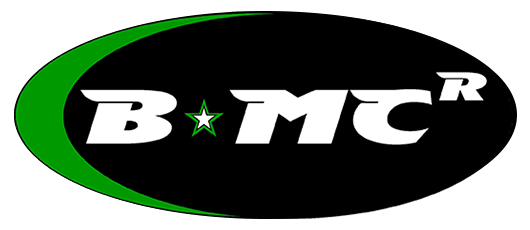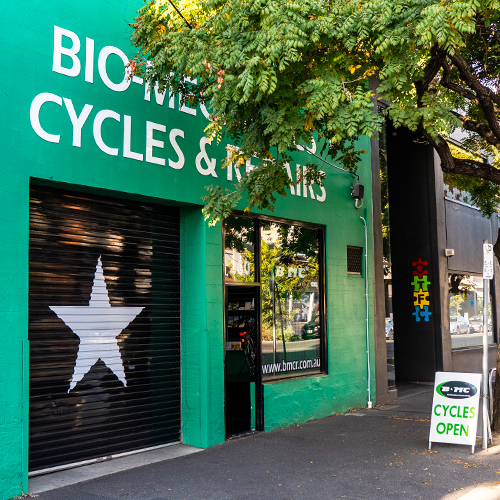Why we love Garbaruk bike components [UPDATED 2024]

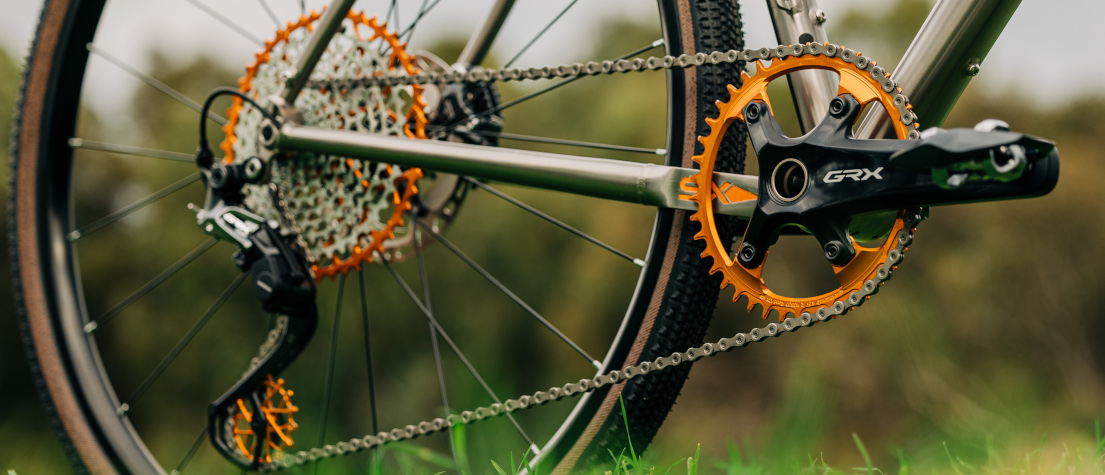
A detailed review of the Garbaruk bike components range
Is Garbaruk a good brand? Can I use a Garbaruk cassette on my bike? Where does Garbaruk come from?
We get a lot of Garbaruk-related questions and figured it was time for an in-depth look at this lightweight, ratio-expanding range of components. We’re covering everything from how Garbaruk products work and what they can do for your gears to where they’re made and if they’re really as light as claimed.
Let’s get stuck in!
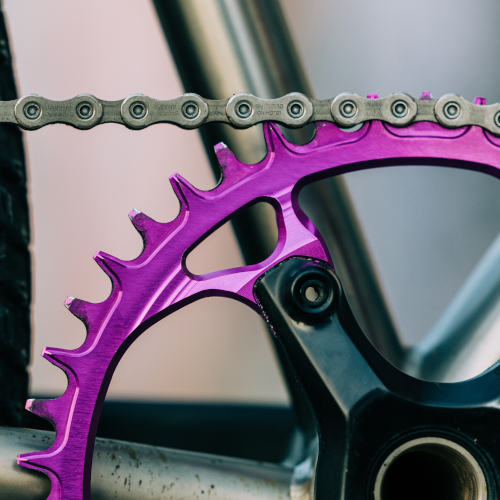
Where is Garbaruk made?
Garbaruk bike components are made in Poland.
The company gets its name from its founders, brothers Valeriy and Yuriy Garbaruk. Garbaruk started in Kyiv, Ukraine, and manufactured all their components there until moving to Krakow in 2019.
Everything is researched, developed and created in-house—a rarity in the bicycle industry.
What products do Garbaruk make?
Garbaruk make cassettes, chain rings, derailleur cages, jockey wheels, and (as of 2023) cranksets. While the company specialises in drivetrain components, Garbaruk also produce complimentary accessories such as lock rings, top caps and chain ring bolts.
Garbaruk products are available in a spectrum of colours, so not only do you get brilliant performance, you can also mix and match them to customise your aesthetic. Can you get a green cassette from SRAM? No, you cannot.
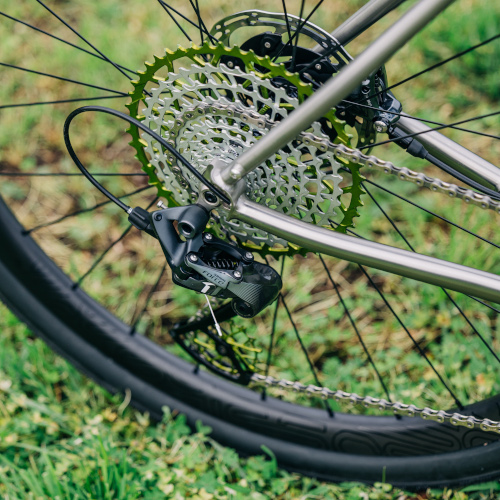
Will Garbaruk work on my bike?
Garbaruk components are designed for mountain bikes, gravel bikes and road bikes, but are made for 1X (single chain ring) setups.
If your bike is a 2X or 3X (running two or three chain rings at the front) and you want to add a Garbaruk chain ring, cassette or derailleur cage into the mix, you’re out of luck: these particular Garbaruk parts are not designed to be run with multiple chain rings.
But dry those tears – you can always drop a Garbaruk top cap on your rig or maybe spruce up your derailleur with some Garbaruk jockey wheels in a complimentary colour.
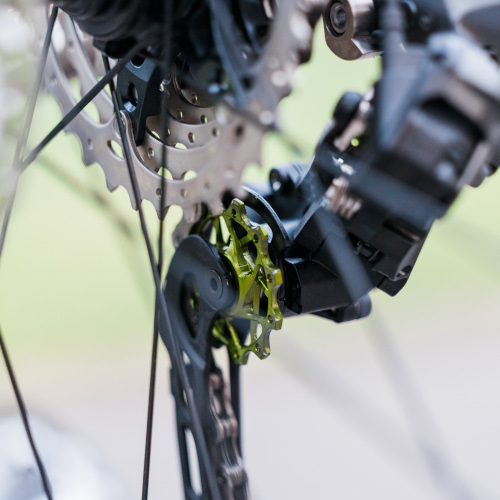
Is Garbaruk compatible with Shimano?
Yes. Garbaruk will work with 11 and 12 speed 1X Shimano setups, but there are some parameters, which we’ll address in a moment. (Don’t worry; we’ll cover everything you need to know.)
Is Garbaruk compatible with Sram?
Yes. Garbaruk will work with 11 and 12 speed SRAM setups, but, as with Shimano, there are some parameters.
Is Garbaruk compatible with Campagnolo?
Nope. Sorry.

So what makes Garbaruk components so good?
There are three main reasons we rate Garbaruk components so highly.
1. Garbaruk can expand your gear range
Garbaruk can dramatically extend your gear range by converting your low-volume rear derailleur into one that’s capable of taking on enormous cassettes. Whether you’re struggling up the hills or spinning out on the downhill runs, a Garbaruk rear derailleur cage will give your drivetrain the capacity to fit a cassette that addresses your problems.
Between the cage giving you a proper range of gears for all gradients and the multitude of chain ring options, you’ll be able to pick and mix components to create the perfect, custom-made package for your bike.
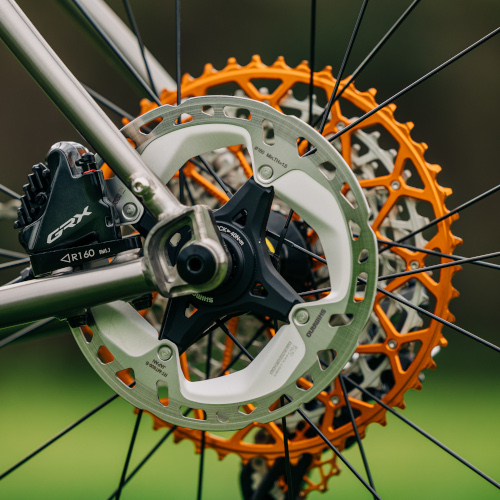
2. Garbaruk components are lightweight
Garbaruk components are light, and also lighter than their big-box competitors.
For example, Garbaruk’s 12 speed 11-52T cassette weighs 333g, compared to Shimano’s 10-51 cassettes which clock in at 367g (XTR), 470g (XT) or 534g (SLX). It’s also lighter than SRAM’s 10-50t at 357g, and Garbaruk’s 12 speed SRAM 10-52 cassette is 23g lighter than SRAM’s XX1 10-52 offering, too.
If you’re using multiple Garbaruk components, you can end up shaving a significant amount of weight off your overall build.

3. Garbaruk cassettes are cheaper than big brand alternatives
While we love the performance and lightness of Garbaruk bike parts, they’re also extremely good value for money.
For example, a Garbaruk 12sp 10-52T cassette is $469. Compare this to SRAM’s offerings: $945 (XS-1297 Eagle T-Type), $690 (XG-1295 Eagle T-Type), $720 (XG-1295 Eagle), or $830 (XG-1299 Eagle).
The fact that they’re so well-priced is why we use them on a lot of custom builds – it’s a perfect way to add personalised touches without blowing the budget.
Let’s look at the main players in a bit more detail.
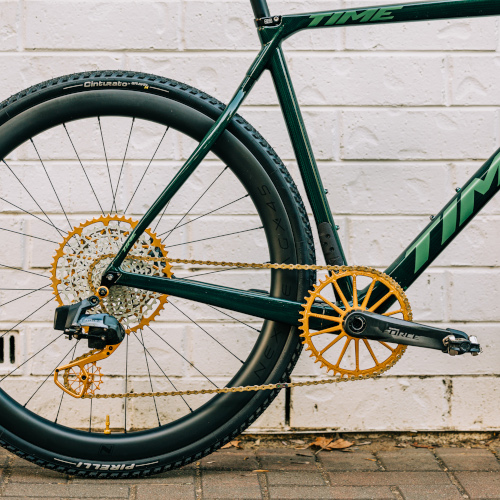
Garbaruk cassette review
Garbaruk’s cassettes are their flagship line, and come in 11 and 12-speed options for both SRAM and Shimano. As an added bonus for Shimano peeps, a Garbaruk 11-52 cassette means you can upgrade to a 12-speed drive train without the need for a new freehub or rear wheel.
The main assembly of a Garbaruk cassette is milled from a single piece of chromoly steel, and then nickel-coated for extra durability. The largest cog is machined from 7075-T6 aluminium alloy, then bolted to the main body in 12 places – it’s a rock-solid assembly. (This is the cog which is anodised, if you’re looking for fancy-pants colour options.)
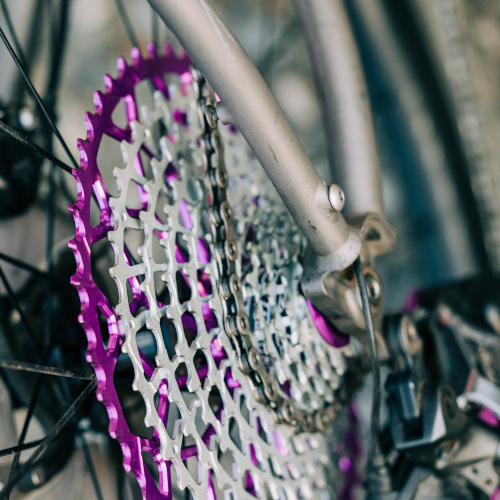
All Garbaruk cassettes slot directly onto standard freehub designs for each brand and speed variant, and slide off your freewheel in one piece for easy removal (e.g. cleaning).
Overall, they’re light, strong and beautifully made.
All you gotta do is pick your operating system, speed and ratio:
Garbaruk Shimano cassettes
- 11-speed (standard freehub): 11-46T, 11-50T
- 12-speed (standard freehub): 11-52T
- 12-speed (Micro Spline freehub): 10-52T
Garbaruk SRAM XD cassettes
- 11-speed (XD freehub): 10-46T, 10-50T
- 12-speed (XD freehub): 10-44T, 10-48T, 10-50T, 10-52T
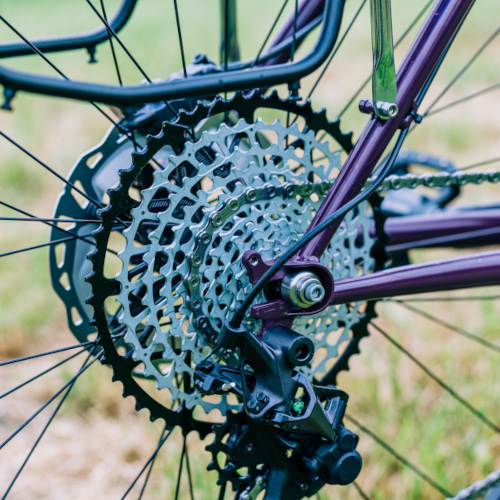
Garbaruk derailleur cage review
Arguably almost as famous as Garbaruk’s cassettes, their rear derailleur cages are a game-changer. Garbaruk cages are machined from 7075-T651 aluminium alloy, are stiff, and weigh less than 50 grams. That’s a lot of bang for not much buck. Their real benefit, however, is that they let your rear derailleur take on bigger cassettes.
Let’s say you’re running a Shimano GRX 11-speed rear derailleur. Traditionally, it will only work with cassettes up to 11-42. Pop on a Garbaruk cage, however, and your bike can now take cassettes up to 11-50T. That’s a 19% expansion in your gear ratio.
Running a Shimano 2X drivetrain and want to convert to 1X? A Garbaruk cage will let you do that, too. (But you will need a new rear derailleur as their cage is not designed to work with the 2x version of the GRX system.)
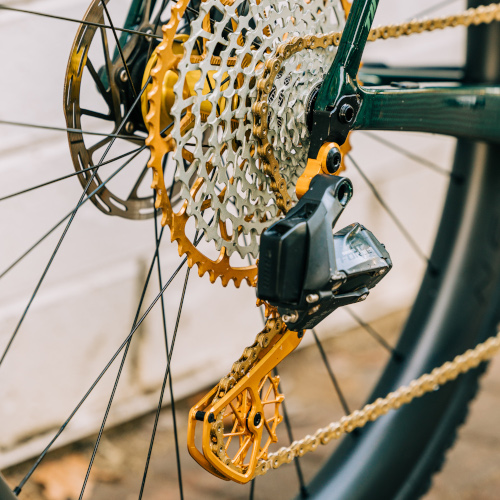
Garbaruk cages can also transform your SRAM setup. Say goodbye to your 11-42 cassette limitation as your drivetrain transforms into a 10-50 hill-eating machine, and you didn’t even have to replace your derailleur.
But how does a Garbaruk rear derailleur cage actually extend your gear ratio?
By repositioning the jockey wheels/pulleys so the upper jockey wheel sits closer to the smallest cassette cog when compressed and moves further away from the largest cassette cog when extended. This optimised position means your drivetrain will now work with much bigger rear cogs.
Here's a couple of diagrams from Garbaruk to show you what we mean. The red jockey wheels are positioned with a regular derailleur cage; the green ones show where they sit when using a Garbaruk cage.
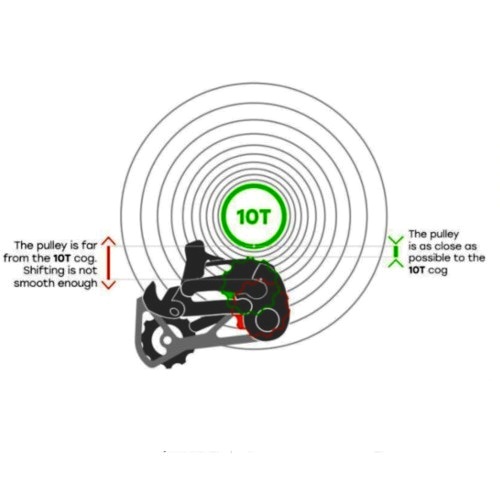
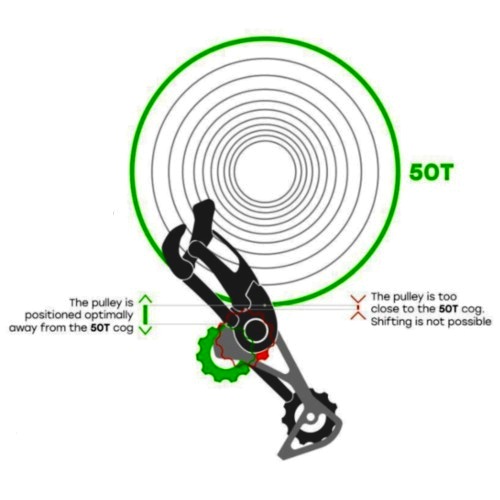
A Garbaruk derailleur cage is also a far better option than messing around with something like a Wolftooth roadlink; although roadlink-style products are offered as a way to let a road derailleur run a MTB-style cassette, we’ve never found them to be an efficient or reliable solution. Indeed, a lot of riders who try out these systems often end up binning them and going for a Garbaruk cage instead. (It’s kind of like buying a cheap set of panniers and then coming back in a few months to get the Ortliebs you wanted in the first place. Quality and simplicity counts.)
Check out a derailleur with and without a Garbaruk cage:

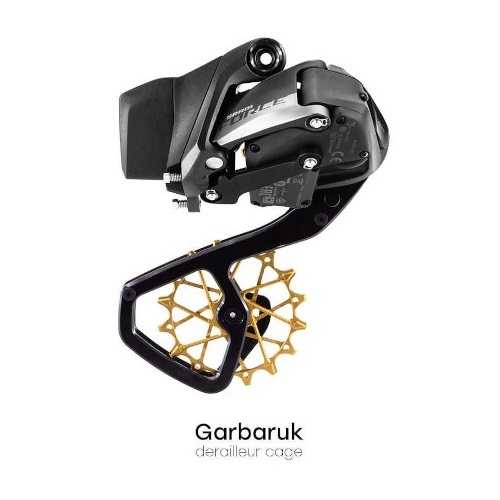
Bit of a shift, huh? (No pun intended.)
Anyway, here are the various cage options, including which rear derailleurs they work with.
Garbaruk Shimano cages:
- 11-speed, compatible with Deore (M6000 10sp), SLX (M7000), XT (M8000), and XTR (M9000) rear derailleurs
- 11-speed GRX, compatible with RD-RX812 rear derailleurs
- 11-speed GRX Di2, compatible with RD-RX817 rear derailleurs
- 12-speed MTB, compatible with RD-M7100 (SLX), RD-M8100 (XT), RD-M9100 (XTR), and RD-RX822 (GRX 12-speed SGS) rear derailleurs
Garbaruk SRAM cages
- 11/12-speed, compatible with (deep breath) 11-speed NX, GX, X1, X01, XX1, APEX 1, Rival 1 and Force 1 rear derailleurs, and 12-speed XX1 Eagle, X01 Eagle, GX Eagle, NX Eagle, GX Eagle AXS, X01 Eagle AXS, and XX1 Eagle AXS rear derailleurs
- 11/12-speed, compatible with 12-speed Red AXS, Force AXS, and Rival AXS, and etap 11-speed A2 rear derailleurs
Note: Garbaruk cages are only compatible with 1X systems.
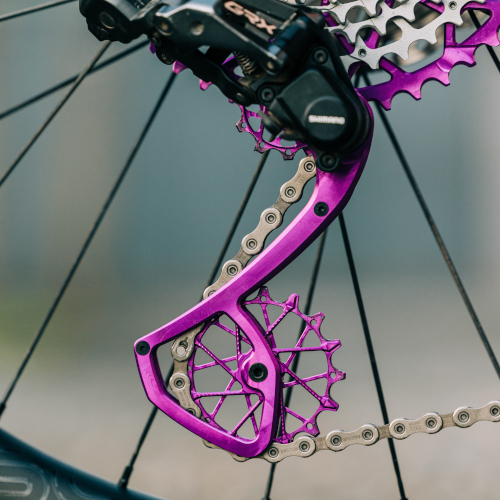
Garbaruk rear derailleur pulleys/jockey wheels review
Garbaruk pulleys are often the first thing people notice on a drivetrain.
We mean, just look at them:
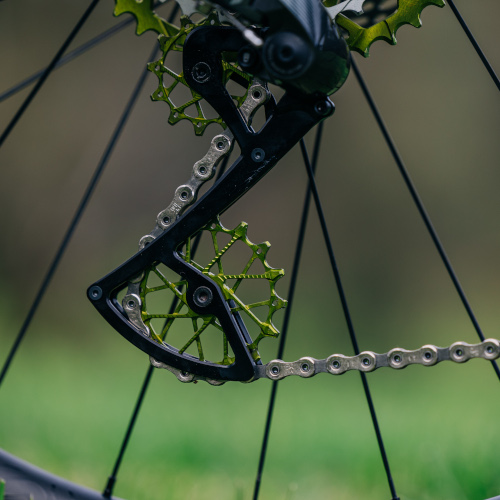
These oversized pulleys are CNC-machined out of a single piece of 7075-T651 aluminium alloy; as you can probably imagine, they’re ridiculously light. Not only that, they’re so good-looking that complete strangers will stop you just to gawk at them.
Can I use Garbaruk pulleys in a standard derailleur cage?
Yes.
Garbaruk make a massive range of stock replacement pulleys which work with regular cages, so if you’re wanting to add some smoothness and colour to your drivetrain, this is a quick and easy way to do it.
Do you have to use Garbaruk pulleys with a Garbaruk derailleur cage?
While you technically don’t have to – regular, boring jockey wheels will work fine in a Garbaruk cage – we do recommend it for two reasons:
- It eliminates the gap that can exist between regular lower jockey wheel and a Garbaruk cage, so there’s less space for objects (e.g. a stick) to get caught in between them.
- They look awesome.
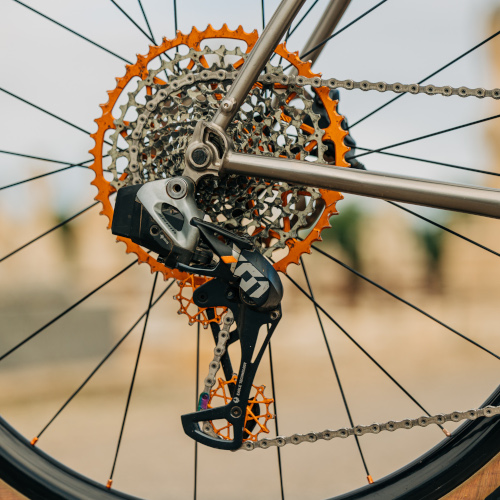
There are many, many derailleur variants, so here’s the basic info you need:
Garbaruk Shimano jockey wheels
- 11/11T – for most 10 and 11sp derailleurs
- 11/12T – for many MTB and gravel 11 speed setups with a standard derailleur cage
- 11/14T – for a newer 11 speed/MTB rear derailleur with a standard derailleur cage
- 11/16T – for 11 speed setups with a Garbaruk derailleur cage
- 14/14T – for 12 speed setups with a standard derailleur cage
- 14/16T – for 12 speed setups with a Garbaruk derailleur cage
Garbaruk SRAM jockey wheels:
- 12/14T – for 11/12 speed setups with a standard derailleur cage
- 12/16T – for 11/12 speed setups with a Garbaruk derailleur cage

Garbaruk chain ring review
Garbaruk make 1X chain rings for road, MTB and gravel. There’s something to suit almost every major manufacturer – Shimano, SRAM, Tune, Specialized, FSA, Cannondale, Easton, Race Face, e13, Hope, Bosch, Rotor – as well as a few more niche ones, such as THM.
Hot tip: Garbaruk also machine their chain rings to suit Shimano’s crank arm profiling, so their rings blend into the drive train, unlike other brands. (cough W*lftooth cough)

The Garbaruk chain ring range is massive. At last count, they made almost 100 different models, not including all the different teeth sizes. There are 4-bolt chain rings, 5-bolt, direct mount, round, oval, aero – pretty much every kind you can imagine.
So why should you choose a Garbaruk chain ring?
- They’re light (of course).
- They’re made from extremely durable 7075-T6 aluminium alloy.
- They’re recessed to help shed chain-clogging mud and dirt.
- Their teeth are taller, which holds the chain better.
- They’re narrow-wide.
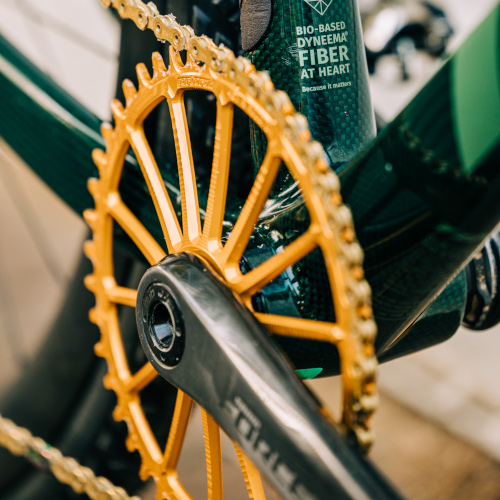
What’s a narrow-wide chain ring and why do I want one?
When you look at a bike chain, you’ll noticed that the links have slightly different widths. Most of the time, chain ring teeth are sized to accommodate the smaller links, which means that there’s a gap in the bigger ones. A narrow-wide chain ring, on the other hand, has teeth that are (you guessed it) narrow as well as wide, so it perfectly matches up with the chain. A chain and chain ring that run perfectly together means that your drivetrain not only operates more smoothly but is also less likely to drop the chain because there’s no gap on the bigger links (as there can be with a regular chain ring).
Greater chain contact, smoother pedalling, and less chance of chain-drop: narrow-wide is the way to go on 1X.
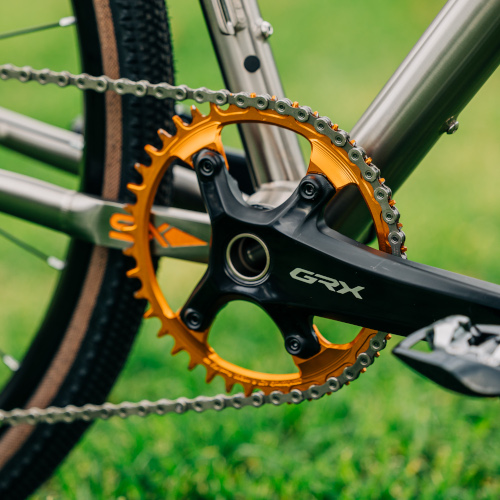
Garbaruk cranksets review
The latest addition to the Garbaruk lineup, Garbaruk’s cranksets are everything we’ve come to expect: light, stiff, durable and beautiful.
These aluminium cranks comprise a two-piece hollow body, and are designed to be as light as carbon cranks but without carbon’s fragility. No more stressing about a rock strike that fractures your crank arm – a Garbaruk crank will keep you rolling.
With a stunning, minimalist design, you can also choose your crank arm and lock ring colours. Take that, er… every other brand!
Garbaruk cranksets are available in two models – Road/Gravel and MTB – and two lengths: 170mm or 175mm.
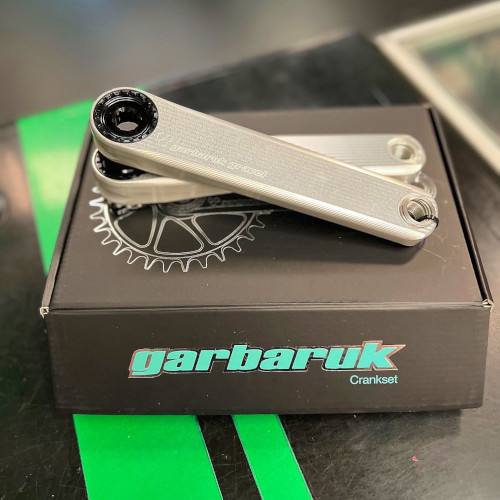
About those colours…
You clearly know by now the benefits of running Garbaruk components. However, we're not even going to pretend that we don't care about aesthetics: they look awesome, and are available in blue, green, gold, violet, red, black, and silver.
If you’re wanting to go down the colour route, however, here are a couple of things to keep in mind.
Firstly, Garbaruk anodise their components in colour batches. Anodising involves putting items in a chemical bath and then shooting electricity through it. As a result, there can sometimes be slight colour differences between each batch. It’s something that most people don’t tend to notice, but we think it’s worth mentioning.
Secondly, like any other component, anodisation is subject to wear and tear. You’ll see it start to happen on contact points, such as where the chain runs on the jockey wheels, chain ring, and big cassette cog. Again, it’s not really a problem, but worth pointing out.
However, when you look this good, who cares?

And that’s your guide to Garbaruk.
In addition to doing magic things to your drivetrain’s gearing options, Garbaruk components are also noticeably cheaper, lighter and just as well-made as the big-brand alternatives. They’re also a heck of a lot prettier.
As BMCR customer Philip says, “BMCR replaced my 11-speed Shimano cassette with a lightweight cassette and cage. The wider range of the new cassette allowed me to set a new PB on my local climb first time out, going 8.2% (almost two minutes) quicker. It also meant I did not have to change any other parts such as wheels or cranks. A great result and I would recommend anyone do this if you are looking for a performance advantage."
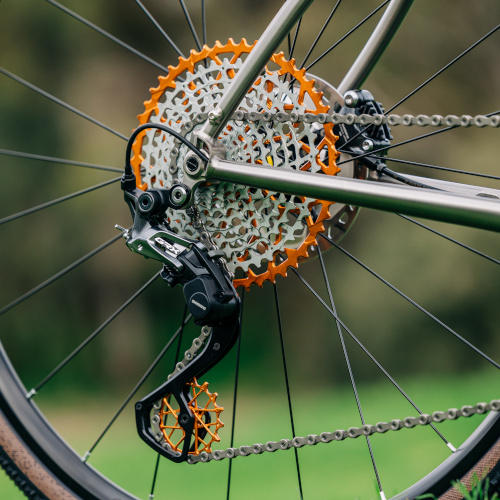
Where do you buy Garbaruk in Australia?
Direct from us! We are cheaper than some of the big online shops stocking Garbaruk, and also have one of the largest Garbaruk ranges in Australia.
Wherever you are in Australia, we can send some Garbaruk goodness your way. Just get in touch, and we'll do the rest.
